
The most effective gene-editing tool available today is CRISPR-Cas9. Just this year, scientists have successfully used it for a wide variety of experiments, from modifying vegetables to encoding a Gif in bacterial DNA. However, most recently, it was used to remove a genetic disease from a human embryo.
Although extremely powerful, CRISPR-Cas9 does have its limitations; it’d only able to target DNA. Therefore, to extend its capabilities to RNA editing, scientists from the University of California San Diego School of Medicine developed a modification of CRISPR, and they’ve called it RNA-targeting Cas9 (RCas9).
In a study published in Cell, the UCDS team tested their new tool by correcting the kinds of molecular errors that cause people to develop microsatellite repeat expansion diseases, such as hereditary amyotrophic lateral sclerosis (ALS) and Huntington’s disease.
During standard CRISPR-Cas9 gene editing, a “guide” RMA is instructed to deliver a Cas9 enzyme to a specific DNA molecule. However, the scientists from UCSD instructed it to target an RNA molecule instead.

Tests that were conducted in the laboratory showed that RCas9 removed 95% of problem-causing RNA for myotonic dystrophy types 1 and 2, Huntington’s disease, and one type of ALS. This technique also reversed 93% of the dysfunctional RNA targets in the muscle cells of patient with myotonic dystrophy type 1, resulting in healthier cells.
Senior author Gene Yeo, a cellular and molecular medicine professor at UCSD School of Medicine, explained that “this is exciting because we’re not only targeting the root cause of diseases for which there are no current therapies to delay progression, but we’ve re-engineered the CRISPR-Cas9 system in a way that’s feasible to deliver it to specific tissues via a viral vector.
Across the world, an estimated 450,000 people are living with ALS. Roughly 30,000 of these are American, where 5,600 people are diagnosed with the disease each year. However, the exact number of Huntington’s disease cases is as easy to pin down. One estimate suggests that around 30,000 Americans display symptoms of it, while more than 200,000 are at risk.
Regardless of the exact figures, these two neurological diseases clearly affect a large number of people. This prevalence and the absence of a known cure makes the UCSD team’s research all the more relevant. Even more exciting is the fact that some kinds of RNA mutations that this study is targeting are known to cause over 20 other genetic diseases.
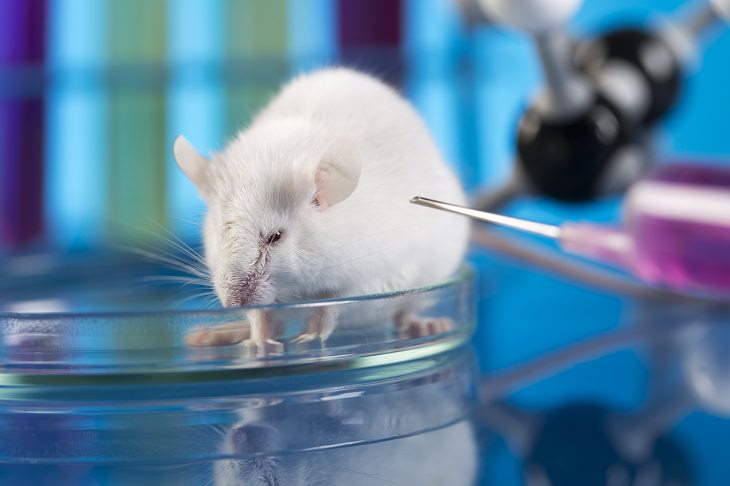
However, the researchers are well aware that what they have accomplished so far is just the first step. While RCas9 works in labs, they still have to figure out how it will fare when tested on humans.
Yeo explains that “the main thing we don’t know yet is whether or not the viral vectors that deliver
RCas9 to cells would elicit an immune response. Before this could be tested in humans, we would need to test it in animal models, determine potential toxicities, and evaluate long-term exposure.”
Ultimately, while RCas9 couldn’t deliver a cure exactly, it could potentially extend a patient’s life. For diseases such as ALS and Huntington’s, that’s a very good place to start.
Source: futurism
Images: depositphotos
 8:10
8:10
Winter Hikers, Gather Round for the Best Tip of the Season
Here's how advanced snow hikers layer clothing in the winter.

Find Out How Some Elderly People Stay Sharp into Old Age
Some old people have better memories than people half their age. This could be the reason why...

These Non-Routine Medical Tests Could Save Your Life!
Here are 8 non-routine tests that really have the potential to save your life, and some of them even need to be taken as early as 30.
 5:04
5:04
Ever Wondered How Hormones Work? Well, Wonder No More...
Ever wondered how hormones work? Well, wonder no more as this informative TED-Ed video explains all!
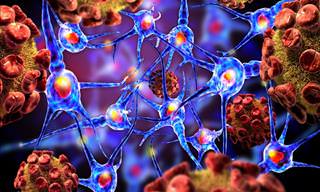
These Insane Diseases Have Baffled Scientists for Years
Medical science has come a long way, but there are still a number of diseases that science cannot explain. Here are some of them:

8 Natural Phenomena That Have Kept Scientists Baffled
On this beautiful planet that we call home, there are many natural phenomena that scientists just cannot explain. Here are 8 of them.

16 Surprising Things I Never Knew About Sleeping!
Who knew there was so much we don't know about our most popular activity! Here are 16 facts you may not have known about your sleep.
 8:10
8:10
Taller Doesn't Mean Bigger - the True Size of Skyscrapers
If you were to compare skyscrapers by area rather than height, which skyscraper would end up on top?
 6:33
6:33
The Story of the Internet: Who REALLY Invented It?
Who really invented the internet, and why did they REALLY do it?

Nobody Believed These 5 Scientists, But They Were Right
These 5 scientists were shamed and ousted, or rudely ignored, although years later, their "crazy" theories turned out to be true...
 4:13
4:13
What Does Medicine ACTUALLY Do In the Body? Fascinating.
What really happens in our bodies when we take medicine, have you ever wondered? This video will answer your question.

Scientists Develop Wrap That Determines if Food is Spoiled
Scientists at MIT have developed a biodegradable plastic-like wrap that changes color when food goes bad. Find out more…
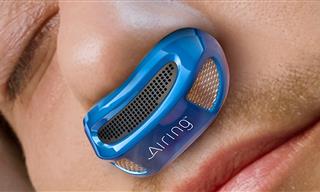 16:55
16:55
Sleep Inventions: 16 Gadgets to Help You Doze Off
If you frequently struggle with sleep, then trying these amazing new sleep innovations could help change your life.

New Study: There is a Sure Way to Slow Aging
This new study confirms what has long been suspected: The less calories we consume, the slower we age.
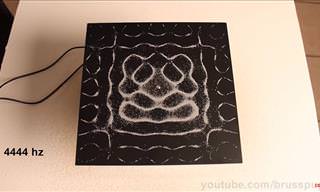 3:39
3:39
Magic is Only A Vibration Away With This Great Experiment
All it takes is some sand, a metal plate and carefully toned vibrations from a speaker to create stunning and complex patterns. This video shows you the amazing results!
 8:05
8:05
This Giant Tank Will Unlock the Universe’s Big Mysteries
Japan is building a huge underground tank inside a mountain to help unlock the many mysteries of the universe.
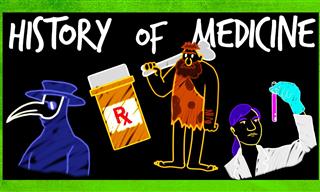 4:51
4:51
The Oldest Medicines That Have Stood the Test of Time
Learn about some fascinating old medicine and general healing practices that have survived for thousands of years.

Could This Popular Ingredient Be a Cause of Cancer?
The chemical triclosan began to appear in a multitude of products in the early 1970s. This ingredient, found in a multitude of products has been linked to cancer.
 6:21
6:21
How to Make Cleansing Hydrogen Water from an Old Battery
Let's embark on this scientific journey to unlock the potential of water and discover the practical uses of hydrogen and oxygen in everyday life.
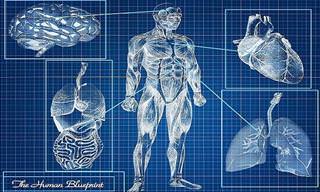
These Are the Miracles That Happen in Our Bodies Every Day
There is a lot that happens inside our bodies every single day. Did you know any of these facts?

These Engineering Failures Ended In Real Catastrophes
These are 10 of the worst engineering failures in history. These accidents had horrific results, and we must learn from them to never ever repeat them.
 5:01
5:01
The Truth About Folding Phones You Need to Know
Don’t buy a foldable without knowing this first.
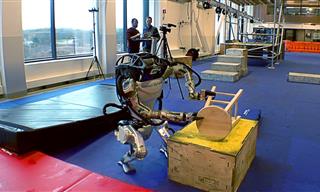 1:48
1:48
Boston Dynamic's Robot Does Some Incredible Things...
Boston Dynamics shows us again what her lead robot can do.
 7:21
7:21
Science: 20 Mechanical Principles Demonstrated Using Lego
In this video, we'll explore a variety of fascinating mechanical mechanisms, all demonstrated using Lego models.

Study Claims: Link Found Between Cats and Alzheimer's
Recent research has brought into focus a potentially unsettling link for cat lovers: owning a feline may increase the risk of developing schizophrenia-related disorders.

I Never Knew These Stunning Facts About Our Universe
If you thought you understood the universe, you'll be completely floored by this insane facts.
 13:55
13:55
WATCH: What Is the Fingerprint of God's Creation?
The golden pattern, describes the mathematical code of the universe. Is this the scientific evidence of God's will and plan?
 2:23
2:23
Introducing the Astronauts That Were Just Launched Into Space
The two astronauts — veteran NASA fliers Bob Behnken and Doug Hurley are honored to have been on this flight. Let's get to know them!

These Photos Show How Dependent We are On Smartphones
Technology has taken over and these funny (but true) photos help to drive this fact home.

17 Incredible Eye Facts You Have To See To Believe
They say the eyes are the window to the soul, and they also happen to be our windows to the world. Here are 17 insanely fascinating facts about eyes.

Study: New Link Found Between Parkinson's and the Gut
A recent study has identified gut microbes likely involved and linked them to decreased riboflavin (vitamin B2) and biotin (vitamin B7), suggesting a potential treatment
 7:15
7:15
Toilets: The Greatest Medical Advancement in Human History
While toilets make some people laugh, they are actually a deadly serious medical advancement. This video explains what toilets mean to civilization.

6 Harmful Toxins You Didn’t Know You Encounter Daily
These toxic chemicals can be found in everyday products and can be extremely dangerous to us.
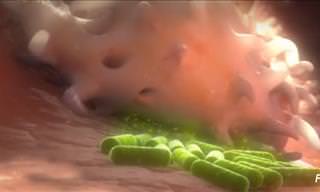 1:29
1:29
A Must See: White Cells Devouring Bad Bacteria!
A real look at how white cells identify and consume harmful bacteria.
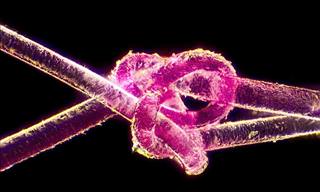
20 Peculiar Microscope Photos That You Really Must See
An unseen world exists at our fingers, and thanks to these wonderful micrographs, we can get a glimpse into that dimension.
 8:14
8:14
What Would You Do if You Had an Extra Thumb?
This revolutionary invention has the potential to revolutionize the field of prosthetics.

PayPal Versus Credit Cards: Here's the Lowdown!
Just how safe is PayPal? Should you have a PayPal account or should you pay for all online purchases using a credit card? All is revealed here!

14 Retro Inventions That Stunned Crowds Back in the Day
These inventions were the talk of the town back in the day.
 3:10
3:10
Watch the Best HD Panorama Photo of Mars Ever Taken
Watch an incredible 1.8-Billion-Pixel panorama of the planet Mars that was recently captured by NASA's Curiosity rover.
 15:07
15:07
Amazing New Scientific Discoveries You Missed in 2024
There have been so many interesting scientific discoveries this year that we have missed!

These Theories About Reality & the Universe Will Stun You
You will be shocked to discover these 10 surprising theories of the universe and reality.
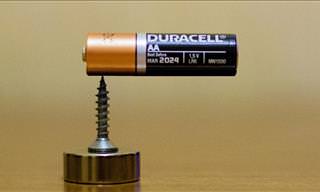 3:28
3:28
Did You Know That Batteries and Magnets Can Make Magic?
Here are some cool magic tricks you can try at home using only a few magnets, batteries and other household items. Watch carefully as the magician puts together a completely self-reliant motor

These Optical Illusions Will Shock Your Mind!
Optical illusions create miscommunication between our eyes and brain making, us see things that are not really there or not see things that are right in front of us. See for yourself.
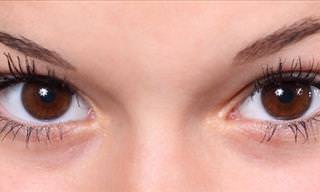
Can One Photo Really Tell How Good Your Eyesight Is?
Scientists say that this single photograph can tell you whether you have good vision or not. Who can you see in the image?
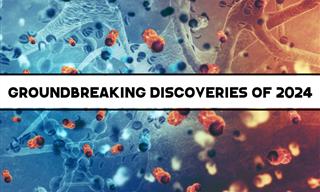
9 Recent Groundbreaking Discoveries You Need to Know About
These recent breakthroughs will revolutionize our world.
 10:01
10:01
19 Things to AVOID to Make Your Phone Live Longer
19 common mistakes we all make, that make our phones age quicker.
 13:01
13:01
13 Incredible ROOF INNOVATIONS For Your House
Keep the roof of your house safe with these incredibly useful inventions.


